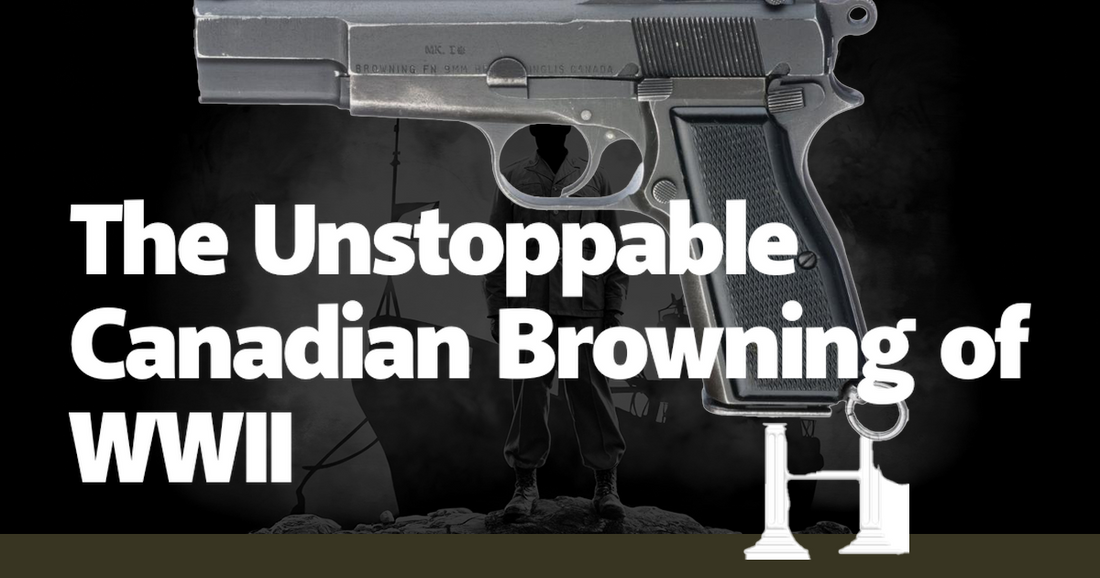In the annals of World War II, many figures have risen to legendary status, but few embody the spirit of resilience and innovation like the Canadian Browning. This heavy machine gun, officially designated as the Browning M1919, became a linchpin of the Canadian Armed Forces’ firepower during the conflict. The Canadian Browning was not just a weapon; it was a symbol of the nation's industrial might, resourcefulness, and unwavering determination. Its journey from factory floors to the front lines encapsulates a story of transformation and adaptation, mirroring the broader narrative of Canada's wartime experience.
The M1919 was originally an American design, but its adoption and subsequent modification by the Canadians transformed it into a unique tool of war. The Canadian Browning stood out for its robustness and reliability in the harsh conditions of European battlefields. Manufactured in Canadian factories, it was tailored to meet the specific needs of Canadian troops, who often found themselves in some of the most challenging combat scenarios. The Canadian Browning's ability to operate smoothly in mud, snow, and rain made it an invaluable asset. Soldiers frequently recounted how the weapon’s consistent performance provided a psychological edge, knowing they could rely on it when everything else seemed uncertain.
One of the most compelling anecdotes about the Canadian Browning comes from the Battle of Ortona in December 1943, often referred to as "Little Stalingrad." Canadian forces faced fierce resistance from entrenched German troops in this Italian town. The urban combat was brutal, with soldiers fighting house-to-house and street-to-street. The Canadian Browning played a crucial role in these close-quarters battles. Its compact size relative to other heavy machine guns allowed it to be maneuvered through the narrow, rubble-strewn streets. Veterans of Ortona vividly recall how the Browning’s steady rate of fire and reliability under duress helped them suppress enemy positions and gain critical footholds.
The story of the Canadian Browning is also a testament to the ingenuity of Canadian industry during the war. Faced with the urgent need to equip their forces, Canadian manufacturers quickly adapted their production lines to produce the M1919. This required not only technical expertise but also a remarkable degree of coordination and collaboration among various sectors. Factories that had previously produced civilian goods were repurposed almost overnight to meet the demands of war. The Canadian Browning thus became a symbol of the nation's ability to mobilize and innovate in the face of adversity.
In addition to its technical prowess, the Canadian Browning had a significant psychological impact on both Canadian troops and their adversaries. For Canadian soldiers, the weapon became a symbol of their fighting spirit. Its distinctive sound was a morale booster, a reminder that they were supported by reliable firepower. For the enemy, the Browning's relentless barrages were a source of dread. German soldiers quickly learned to respect the Canadian Browning, often referring to it in their reports and diaries. This psychological warfare was an intangible yet crucial aspect of its effectiveness on the battlefield.
The Canadian Browning also played a pivotal role in the Normandy campaign following D-Day. As Canadian forces advanced through the hedgerows of France, they encountered a well-fortified and determined enemy. The Browning’s versatility was again on display. Mounted on vehicles, it provided mobile fire support, allowing Canadian units to maintain momentum in their advance. Its ability to lay down sustained suppressive fire was instrumental in breaking through German defensive positions. The Canadian Browning’s performance in Normandy further cemented its reputation as a weapon of choice for Canadian forces.
Post-war, the legacy of the Canadian Browning continued to influence military thinking and weapon design. The experiences and lessons learned from its deployment informed future developments in automatic weaponry. Canadian military historians and veterans alike have often highlighted the Browning as a key factor in the success of Canadian operations during WWII. Its story is frequently cited in military academies and training programs, underscoring its enduring impact on military strategy and tactics.
In the broader context of WWII, the Canadian Browning stands as a testament to the contributions of smaller nations in the Allied victory. While often overshadowed by the more prominent narratives of American, British, and Soviet forces, the role of Canadian troops and their equipment was no less critical. The Canadian Browning is a microcosm of this contribution, embodying the qualities of resilience, innovation, and determination that defined Canada’s wartime effort. Its story is not just one of a weapon, but of a nation rising to the challenges of a global conflict and emerging stronger for it.
The Canadian Browning’s legacy is preserved not only in military museums and historical records but also in the collective memory of those who served. Veterans’ associations and historical societies continue to honor its role in their commemorations and educational programs. The weapon’s story is a poignant reminder of the ingenuity and courage that characterized the Canadian war effort. As time marches on, the Canadian Browning remains a symbol of a nation's resolve and a testament to the enduring spirit of those who fought in one of history’s most significant conflicts.

